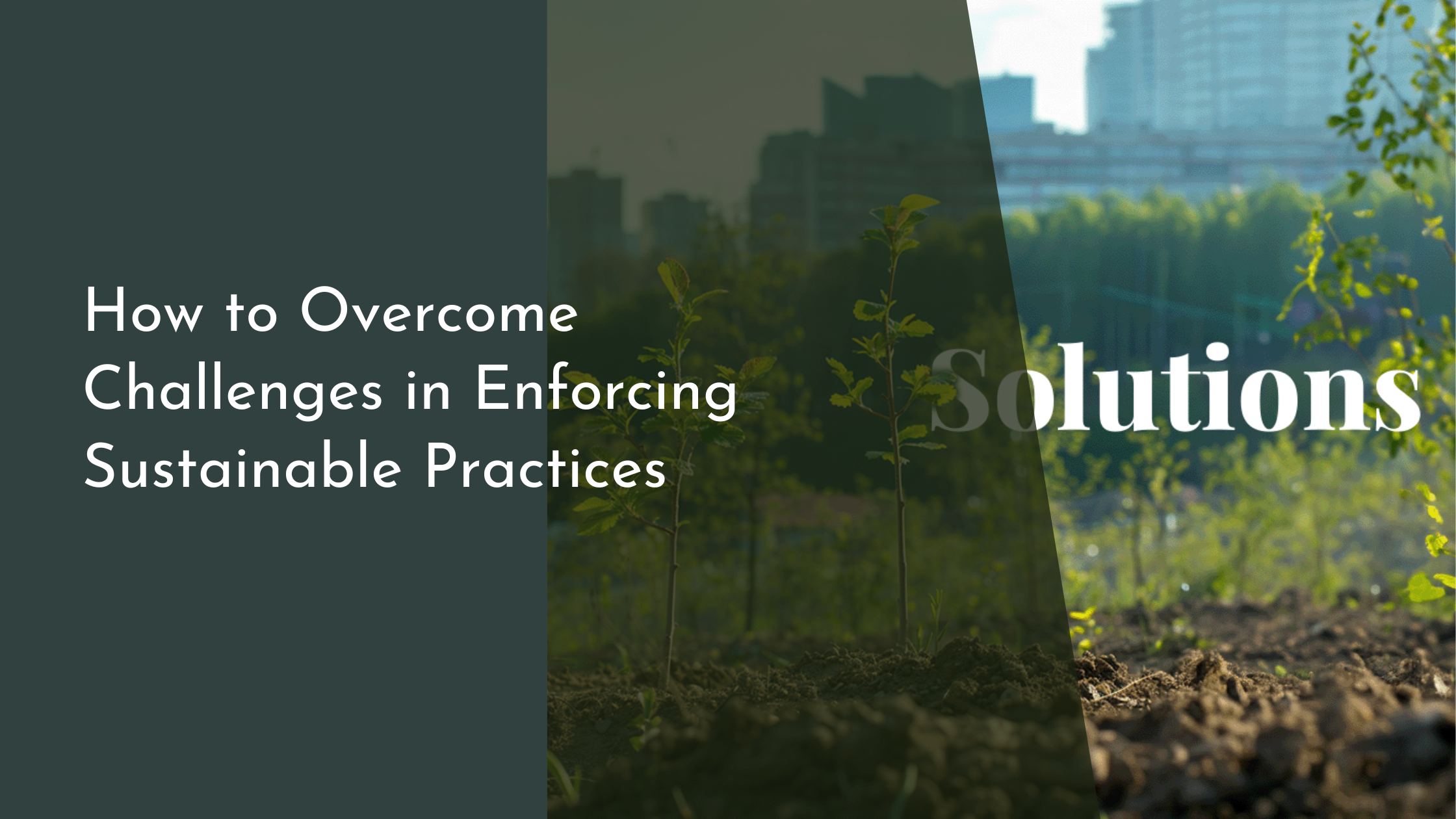How to Overcome Challenges in Enforcing Sustainable Practices
As the world grapples with the effects of climate change and resource depletion, the push towards sustainable practices has never been more critical. Companies, governments, and individuals globally are increasingly recognizing the need to incorporate sustainability into their operations and daily lives. However, enforcing sustainable practices comes with its own set of challenges. This article explores the importance of sustainability, identifies common barriers to its implementation, and provides strategies to overcome these obstacles and build a supportive infrastructure for change.
Understanding the Importance of Sustainability
Sustainability is much more than just a buzzword; it is an essential paradigm for ensuring the long-term health of our planet and the well-being of future generations. At its core, sustainability aims to meet the needs of the present without compromising the ability of future generations to meet their own needs. This involves a delicate balance between economic growth, environmental health, and social equity. By focusing on sustainable practices, we can reduce our ecological footprint, conserve natural resources, and create more resilient communities.
The significance of sustainability extends beyond environmental considerations. It encompasses economic and social dimensions, fostering innovation, creating jobs, and contributing to social equity. Sustainable practices can drive cost savings through increased energy efficiency and the reduction of waste. Moreover, as consumers become more environmentally conscious, businesses that prioritize sustainability can enhance their brand reputation, differentiate themselves in the market, and achieve long-term success. Thus, understanding and committing to sustainability is vital for both environmental preservation and economic prosperity.
Identifying Common Barriers to Implementation
One of the primary challenges in enforcing sustainable practices is the lack of awareness and understanding among stakeholders. Without a clear comprehension of the benefits of sustainability, individuals and organizations may be resistant to change, perceiving it as an unnecessary cost or inconvenience. This resistance can be exacerbated by a lack of education on sustainable options, leading to misconceptions about the feasibility and efficacy of sustainable practices.
Financial constraints pose another significant barrier. Transitioning to sustainable practices often requires initial investments in technology, training, and infrastructure. For small businesses or communities with limited resources, these costs can be prohibitive, deterring them from embarking on sustainable initiatives. Additionally, short-term financial pressures can make it difficult for organizations to prioritize long-term sustainability goals over immediate economic gains. Overcoming these barriers requires strategic planning and a commitment to demonstrating the long-term benefits of sustainability.
Strategies for Effective Engagement and Advocacy
To overcome resistance and engage stakeholders effectively, education and awareness are paramount. By providing comprehensive information about the benefits of sustainability, its impact on the environment, and potential cost savings, organizations can build a compelling case for change. Workshops, seminars, and informational campaigns can help demystify sustainability and highlight success stories, encouraging stakeholders to embrace sustainable practices.
Collaboration and advocacy play crucial roles in advancing sustainability initiatives. By forming partnerships with like-minded organizations, governments, and community leaders, businesses can amplify their efforts and share resources. Joint initiatives can address common challenges, such as infrastructure development and policy advocacy, fostering a supportive environment for sustainable practices. Engaging stakeholders through regular dialogue, feedback, and participation in decision-making processes can further strengthen commitment and drive collective action towards sustainable goals.
Building a Supportive Infrastructure for Change
Developing a supportive infrastructure is essential for sustaining momentum in adopting sustainable practices. This begins with implementing policies and regulations that incentivize sustainability. Governments can introduce tax breaks, grants, and subsidies for businesses and individuals who adopt eco-friendly practices. Additionally, building codes and standards can be updated to encourage energy-efficient designs and sustainable construction practices.
Investing in sustainable technology and innovation is another crucial aspect of building a supportive infrastructure. Research and development in renewable energy, waste management, and sustainable materials can provide the tools needed to transition to a more sustainable future. By fostering an environment that encourages innovation and collaboration among industry experts, academia, and policymakers, we can develop scalable solutions that address both local and global sustainability challenges. This infrastructure not only aids in overcoming current barriers but also ensures the resilience and adaptability of sustainable practices for the future.
In conclusion, while the journey towards enforcing sustainable practices is fraught with challenges, it is a necessary endeavor for ensuring a viable future. By understanding the importance of sustainability, identifying common barriers, and employing effective strategies, we can overcome obstacles and drive meaningful change. Building a supportive infrastructure further strengthens our efforts, paving the way for a sustainable world that values environmental health, economic prosperity, and social equity. Together, through education, collaboration, and innovation, we can create a resilient future for all.

